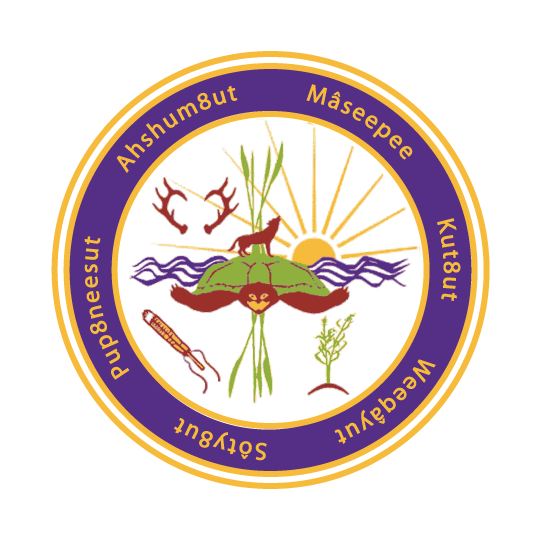Marlene Lopez, a Mashpee Wampanoag elder and Rabbit Clan mother carries on practices like finger weaving, used for centuries.
Last month she gave a demonstration of the practice at the Great Falls Discovery Center in Turners Falls, Massachusetts.
The free event, sponsored by the Massachusetts Department of Conservation and Recreation and the Nolumbeka Project, gave attendees a chance to see Lopez demonstrate the art, weaving with only the fingers, without a loom, to create ceremonial sashes, garters and other items.
“It’s not that difficult once you know what you’re doing, but it’s getting to that point,” Lopez said.
Lopez shared designs of the Eastern Woodland and Plains people of Turtle Island from the 1700s, and demonstrated a style of finger weaving called “warp face,” called such because only the warp strands show on the finished garment.
Designs discussed included diamond, lighting, arrow and chevron patterns.
While the event was a demonstration, a large amount of time was spent talking about the importance of the woven items to the Mashpee Wampanoag Tribe — which are used and worn in religious ceremonies. The “spiritual” items are worn during prayers to help send messages to the Creator.
Also discussed was the importance of Lopez’s role as a clan mother — a cultural position within the tribe that denotes an advisor and caretaker, among other roles.
There are eight total clan mothers in the Mashpee Wampanoag Tribe, each from a different family. Lopez did not become a clan mother automatically, but consulted the tribal elders, medicine man and chief, her 97-year-old father, as to why her family did not have a clan mother.
“I was discouraged,” Lopez said about her family not having a clan mother.
“At one time, we did all have clan mothers,” Lopez said. “But a lot of our culture went underground.”
Clan mothers each belong to a “clan” or family that is named after an animal. Traditionally, Lopez said, the Mashpee Wampanoag are a matriarchal community in which clans are named after an animal that a child within the family dreams about — otters, eels, birds.
“Through children, that’s where you get your messages from,” Lopez said.
As her family did not have a clan mother, that process had not happened. However, when Lopez consulted the medicine man for the Mashpee Wampanoag Tribe about what her family’s clan name would be, he said, “It’s pretty obvious.” Lopez’s father’s longtime nickname is “Bunny,” and, in an area long known for rabbit hunting, Lopez became the Rabbit Clan mother.
The duties of a clan mother can be helping with domestic issues or to raise children, especially orphans or those without grandparents, helping as mediators or messengers between the tribe and the court system, as well as with prayer and spiritual matters.
“As a clan mother, we try very hard to bring our community together,” Lopez said.
“And our community is very much split,” she added, noting that “tradition” and “politics” can be two conflicting entities, and that it’s a clan mother’s responsibility to try and get people to look past political differences and unite.
Clan mothers are also teachers, Lopez said.
Lopez learned to finger weave 30 years ago. At that point she had grandchildren, and began teaching them the art.
Teaching others, and also selling ceremonial sashes at reenactments in places like Historic Deerfield, Lopez said, spread the ancient practice.
“You’re interacting with yourself, your feelings,” Lopez explained the joy of finger weaving to a full room.
The joy of teaching finger weaving, she said, is “seeing that light go off,” when people finally get it. Getting that light to go off, Lopez said, can sometimes take years.
By David McLellan



